|
|
File
Civic Museum, Archaeological Section – Treviso
|
Piazzetta Mario Botter 1 – 31100 Treviso (TV)
– Fax 0422 582634 |
  |
|
Summary
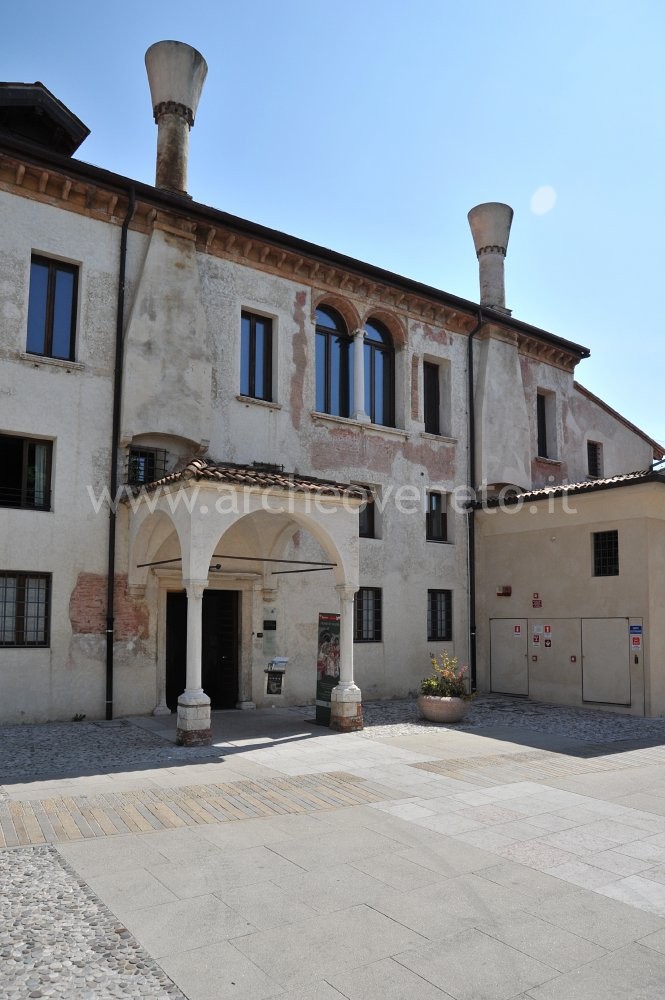
The Archaeological Section of the Civic Museum of Treviso, was recently remounted in “Santa Caterina”. It houses both the important archaeological findings originally collected by its founder, Luigi Bailo, and specimens discovered during the recent excavations carried out in the city of Treviso. The exhibition stretches over the basement and the ground floor and leads the visitor through a journey from the Palaeolithic period to the Roman Age, following a chronological order and, when possible, a topographic criteria. The museum displays the history of Treviso from its birth to the Roman Age, an innovative element of this new layout which proved to be very efficient from a didactic point of view. The exhibition is still to be completed with findings from the Late Antiquity, Byzantine and Longobard period.
Collection history
In 1879, the abbot Luigi Bailo (1835-1932) founded the first nucleus of the “Museo Trivigiano”, gathering together in the Municipal Library the Roman gravestones displayed in the old Town Hall and the donation made by the canon G.A. Bocchi in the 18th century. Furthermore, Bailo commissioned surveys in the territory and bought items of different origin from private collectors in antiques markets. This enabled him to officially open the archaeological exhibition in 1888 in the historic seat in Borgo Cavour. After a first rearrangement in 1938 and despite the heavy bombing on April 7, 1944, the archaeological section was restored and opened again in 1952, thanks to the works carried out by L. Coletti and B. Forlati Tamaro. More recently, following the restoration of the former Convent of Santa Maria dei Servi, the archaeological findings have been moved, enriched and efficiently arranged with a modern and innovative layout in “Santa Caterina”. The new seat was opened on June 29, 2007.
|

 Room no. 1 situated in the basement clearly offers a vivid picture of the settlements in the territory around Treviso between the Middle Palaeolithic period (300,000-40,000 years ago), Upper Palaeolithic period (40,000-11,500 years ago) and Mesolithic period (9,500-6,500 BC). The early presence of people in this area is documented by the set of artefacts in worked flint found in the hilly area (Asolo, Montello) and in the area near the springs (springs of the Sile river) and exhibited in the two display cases. Room no. 1 situated in the basement clearly offers a vivid picture of the settlements in the territory around Treviso between the Middle Palaeolithic period (300,000-40,000 years ago), Upper Palaeolithic period (40,000-11,500 years ago) and Mesolithic period (9,500-6,500 BC). The early presence of people in this area is documented by the set of artefacts in worked flint found in the hilly area (Asolo, Montello) and in the area near the springs (springs of the Sile river) and exhibited in the two display cases.
|

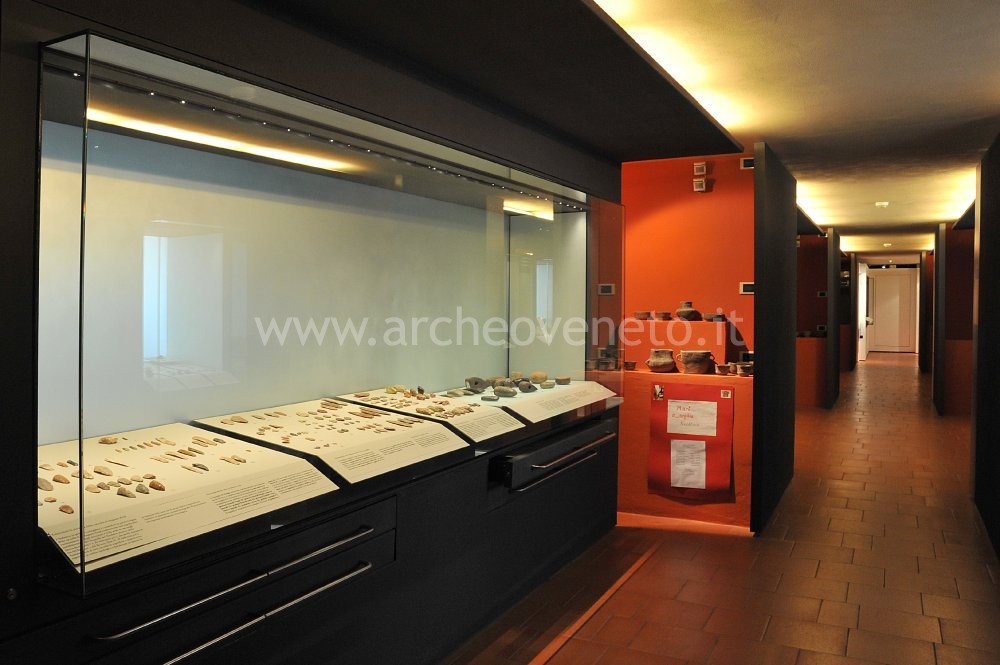 Room no. 2, on the right, displays a selection of specimens from the Recent Neolithic period found in the village of Biancade di Roncade that can be related to a community of hunters and breeders of the “square mouth vases” culture. The last phase of the Neolithic period, the Copper Age and the Bronze Age (second half of the 5th millennium-2nd millennium BC) are well represented by items from Agusto Krüll’s collection which are exhibited in the large display case on the left. The collection includes a large quantity of artefacts in flint (including tools with steep retouch, tools and armours with flat retouch, dagger blades, parts of sickles, tools made with the Campignian technique, lithic reduction by-products) and polished stone, discovered thanks to the surveys carried out in the territory of Treviso, mainly in the hilly area around Montello. The two drawers below the display case contain copies of wooden and flint sickles used during the Bronze Age which have been exhibited for didactic purposes. Room no. 2, on the right, displays a selection of specimens from the Recent Neolithic period found in the village of Biancade di Roncade that can be related to a community of hunters and breeders of the “square mouth vases” culture. The last phase of the Neolithic period, the Copper Age and the Bronze Age (second half of the 5th millennium-2nd millennium BC) are well represented by items from Agusto Krüll’s collection which are exhibited in the large display case on the left. The collection includes a large quantity of artefacts in flint (including tools with steep retouch, tools and armours with flat retouch, dagger blades, parts of sickles, tools made with the Campignian technique, lithic reduction by-products) and polished stone, discovered thanks to the surveys carried out in the territory of Treviso, mainly in the hilly area around Montello. The two drawers below the display case contain copies of wooden and flint sickles used during the Bronze Age which have been exhibited for didactic purposes.
|

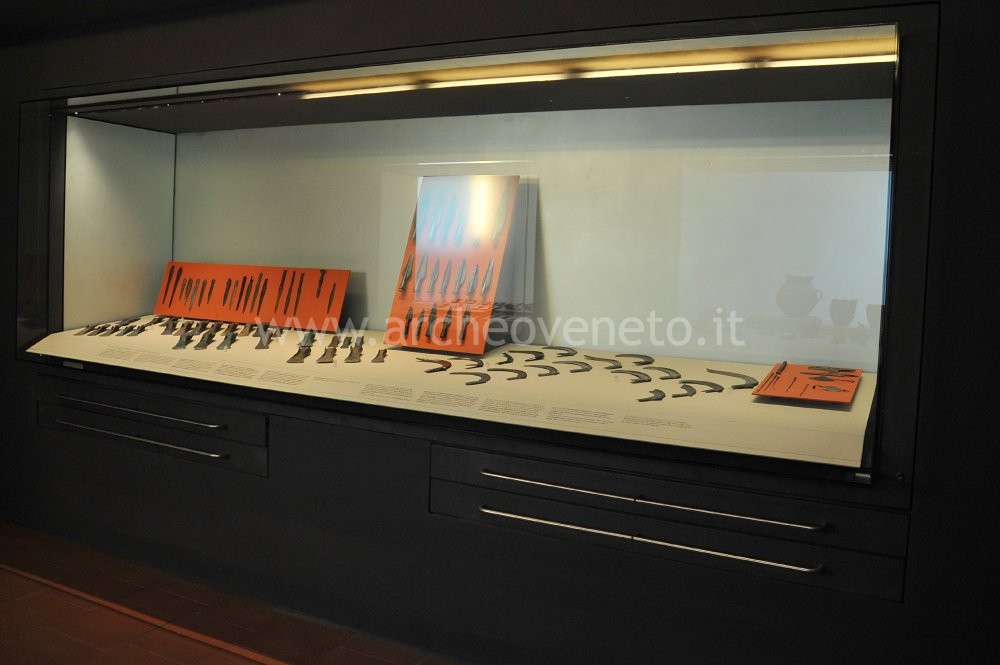 Room no 3 exhibits a selection of items from the late Copper Age and Bronze Age. The first display case on the right contains several ceramic artefacts from the Middle and Recent Bronze age and a couple of cheekpieces in deer antler from the settlements situated along the Sile river. Room no 3 exhibits a selection of items from the late Copper Age and Bronze Age. The first display case on the right contains several ceramic artefacts from the Middle and Recent Bronze age and a couple of cheekpieces in deer antler from the settlements situated along the Sile river.
The second display case on the right and the larger one on the left exhibits, in a chronological order, a prestigious collection of weapons (axes, daggers, spearheads), tools (sickles) and items of clothing. These metallic artefacts were found in the clay and gravel pits situated between Sant’Antonio and Casier and date back to the Copper and Bronze Age. Presumably they were related to funeral or votive rites.
|

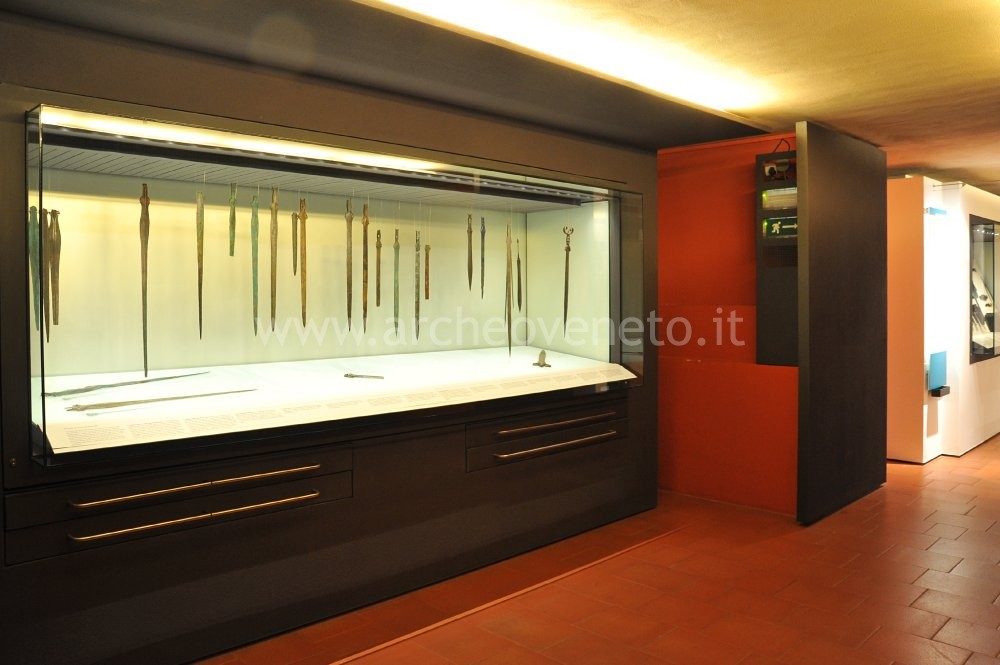 The large display case along the left wall of room no. 4 houses an amazing collection of bronze swords, superbly preserved. They were discovered in the Piave (Salgareda) and Sile rivers and can be grouped as follows: “Sauerbrunn-Boiu” (Middle Bronze age, 17th-14th century BC), “grip-tongue” (Recent and Late Bronze Age, mid 14th-half of the 10th century BC), “antenna” (early Iron Age, 9th-8th century BC) swords. Presumably they were related to funeral or votive rites. The large display case along the left wall of room no. 4 houses an amazing collection of bronze swords, superbly preserved. They were discovered in the Piave (Salgareda) and Sile rivers and can be grouped as follows: “Sauerbrunn-Boiu” (Middle Bronze age, 17th-14th century BC), “grip-tongue” (Recent and Late Bronze Age, mid 14th-half of the 10th century BC), “antenna” (early Iron Age, 9th-8th century BC) swords. Presumably they were related to funeral or votive rites.
|

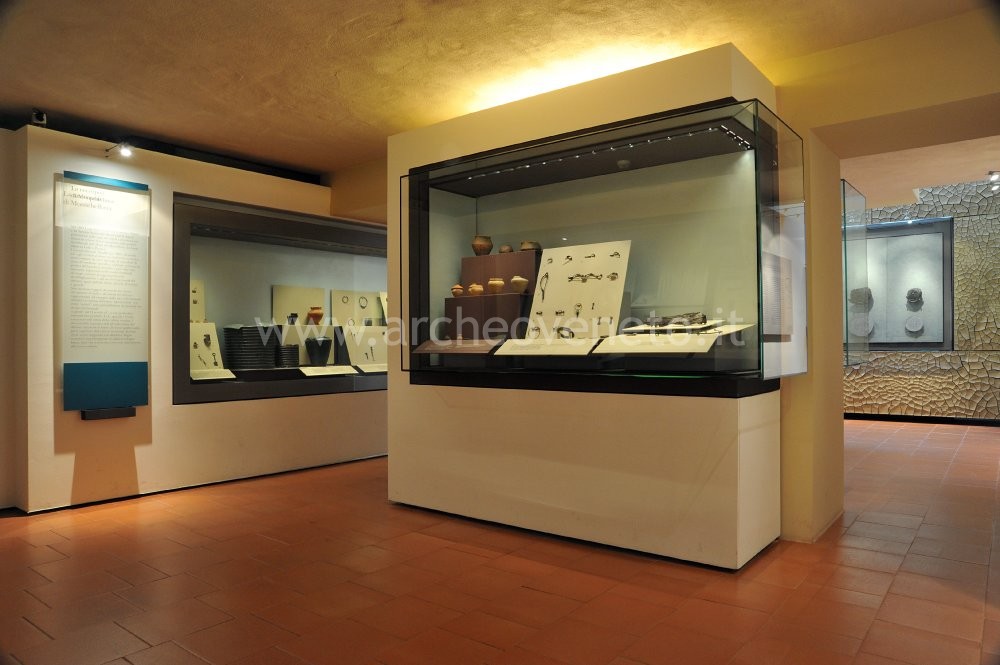 The last and largest room in the basement hosts a wide collection of artefacts from the Iron age found in different sites in the area around Treviso. The last and largest room in the basement hosts a wide collection of artefacts from the Iron age found in different sites in the area around Treviso.
At the very entrance, on the left, there is a set of bronze and iron artefacts found in the Sile river and its surrounding area: spearheads, knives, axes, pins, a bowl and a situla, double-head knives and ingots, used to barter and in local metallurgic activities.
Noteworthy are the items found in the necropolis of San Martino dei Camaldolesi and from one or more sacred areas around Oderzo exhibited in the display cases situated in the middle of the room. The necropolis of Oderzo (6th-1st century BC), which can be related to the local Veneto community, also contains objects from the Celtic tradition starting from the 5th century BC (belts with hooks in pierced metal which recall the “Lord of the animals”, torques and folded swords). Statues depicting offerants and a group of votive tablets with embossing decorations come from sacred areas in Oderzo and date back to the 6th-3rd century BC. Next to them there is a group of bronze statuettes from Montebelluna and Adria.
Along the left wall, there are items found in the necropoleis of Montebelluna (Santa Maria in Colle and Posmon) dating back to the 8th-1st century BC. They include situlas and cists for the disposal of ashes (a large ribbed cist in bronze), grave goods composed of precious objects, mainly ornamental ones (armillae, fibulae, pendants, etc.) and more recent artefacts such as a set of terracotta urns with the inscription of the deceased’s name in Venetic or Latin.
The most interesting items are situated in the second section of the room, devoted to the so-called “art of situlas”. On the back wall there are the five famous votive discs in bronze sheet from Montebelluna (or from the valley of the Piave river), four of which depict the solemn female figure of a goddess with the symbols of a “Lady of the animals”. These discs date back to the 4th-2nd century BC. A bronze cist from Montebelluna, here exhibited singularly, depicting scenes of marriage and ploughing (6th-5th century BC) also holds great importance.
|

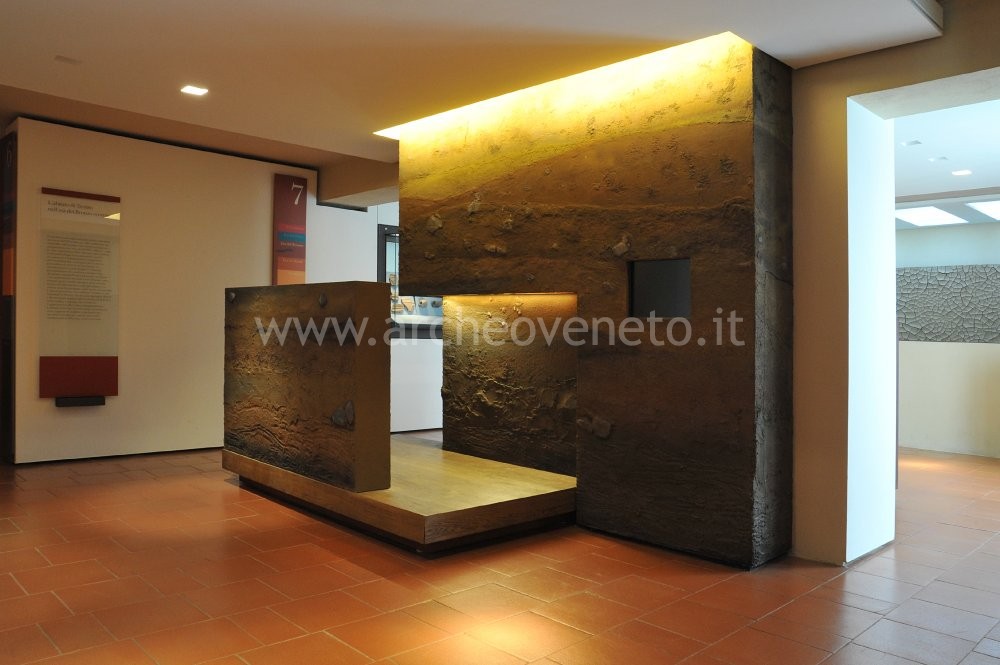 Up on the ground floor, the exhibition starts with room no. 6 which contains findings discovered during the recent city diggings. This room focuses on the origin and developments of the settlement of Treviso since when it was a village at the end of the Middle Bronze Age in the area of the current Piazza Duomo, dei Signori and Sant’Andrea. The only display case in the room exhibits a selection of vases for cooking and storage, dating back to the Recent Bronze age and typologically close to the “Sub-appennine culture”. Up on the ground floor, the exhibition starts with room no. 6 which contains findings discovered during the recent city diggings. This room focuses on the origin and developments of the settlement of Treviso since when it was a village at the end of the Middle Bronze Age in the area of the current Piazza Duomo, dei Signori and Sant’Andrea. The only display case in the room exhibits a selection of vases for cooking and storage, dating back to the Recent Bronze age and typologically close to the “Sub-appennine culture”.
|

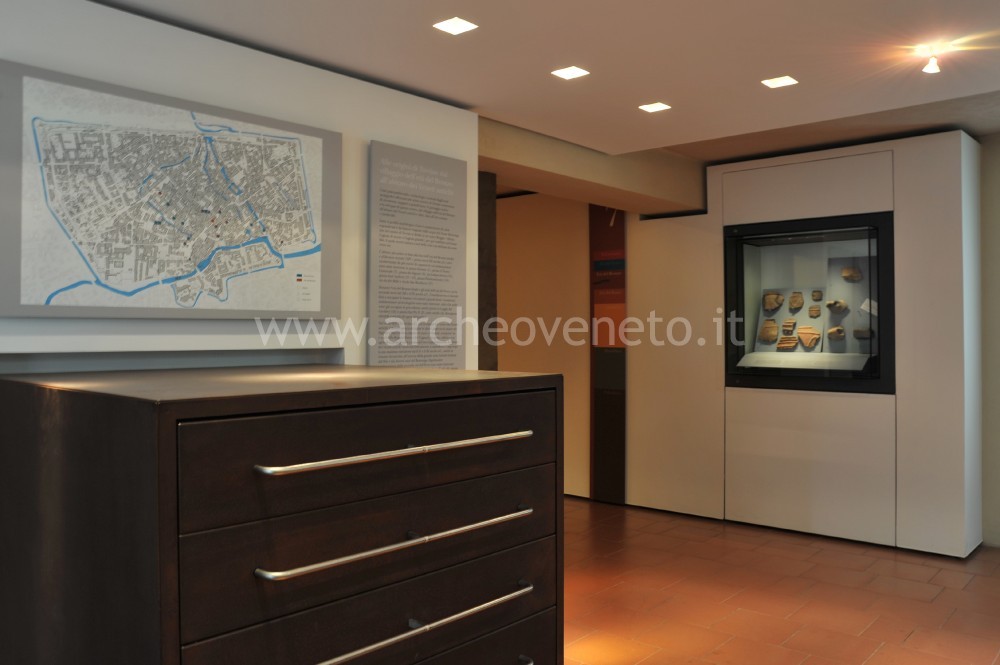 Room no. 7 highlights the paleo-environmental features of the area where the settlement was situated and integrates the information given in the previous room as regards the Recent Bronze age. Its only display case contains a selection of tableware, typologically close to the “Sub-appennine culture”. Room no. 7 highlights the paleo-environmental features of the area where the settlement was situated and integrates the information given in the previous room as regards the Recent Bronze age. Its only display case contains a selection of tableware, typologically close to the “Sub-appennine culture”.
|

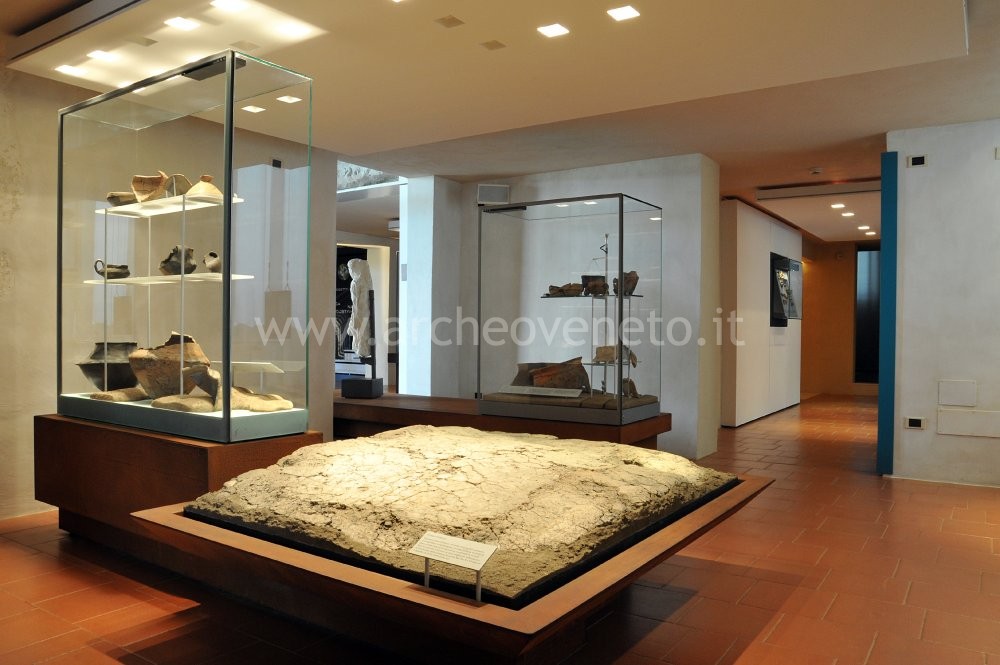 Room no. 8 exhibits findings which date back to the Late Bronze age (12th-10th century BC), when the settlement spread to the lower area of the current Piazza San Pio X. The display cases contain tableware and pottery for cooking and storage, as well as examples of bone and horn processing and bronze metallurgy. In the middle of the room there is a broad worktable in burned loam found in Piazza San Pio X (10th-9th century BC). Room no. 8 exhibits findings which date back to the Late Bronze age (12th-10th century BC), when the settlement spread to the lower area of the current Piazza San Pio X. The display cases contain tableware and pottery for cooking and storage, as well as examples of bone and horn processing and bronze metallurgy. In the middle of the room there is a broad worktable in burned loam found in Piazza San Pio X (10th-9th century BC).
|

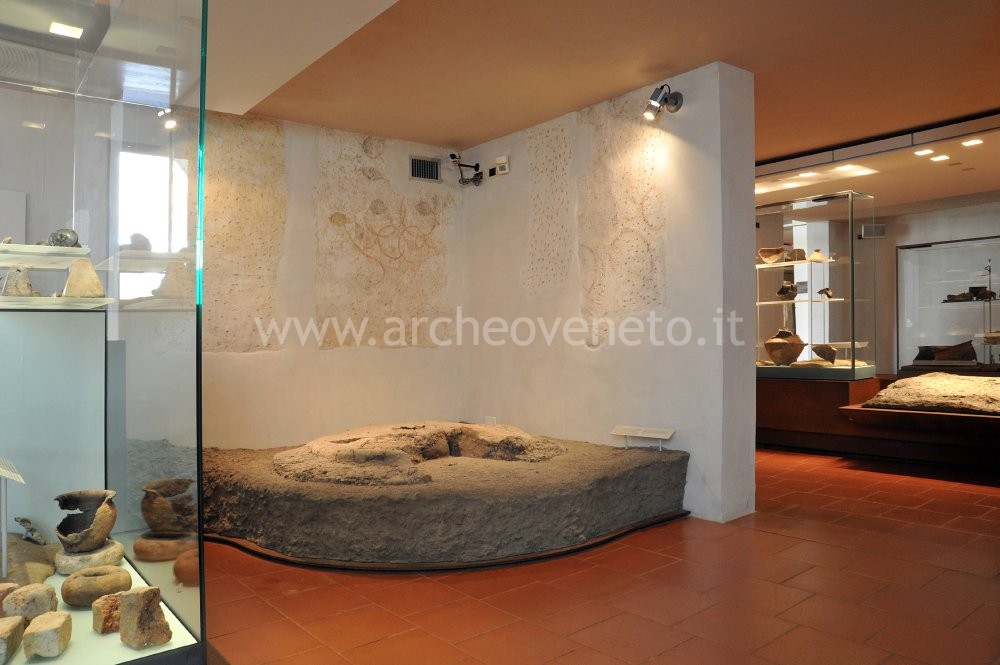 Room no. 9 introduces the passage from the late Bronze age settlement to the village of ancient Veneti people which developed during the early Iron age (from 10th-9th to 8th-5th century BC). The room contains other findings from the area of Piazza San Pio X. In this urban area, a vast quarter of the village was brought to light, composed of houses with a rectangular plan, wooden roof, fireplaces and typical circular braziers made of loam and clay, accurately placed in the corners of the room. The display cases contain pottery (some of which for domestic worship), knitting and weaving tools and objects related to fireplaces; on the left side of the entrance the cast of an oak table originally used as the base of a fireplace is exhibited. Room no. 9 introduces the passage from the late Bronze age settlement to the village of ancient Veneti people which developed during the early Iron age (from 10th-9th to 8th-5th century BC). The room contains other findings from the area of Piazza San Pio X. In this urban area, a vast quarter of the village was brought to light, composed of houses with a rectangular plan, wooden roof, fireplaces and typical circular braziers made of loam and clay, accurately placed in the corners of the room. The display cases contain pottery (some of which for domestic worship), knitting and weaving tools and objects related to fireplaces; on the left side of the entrance the cast of an oak table originally used as the base of a fireplace is exhibited.
|

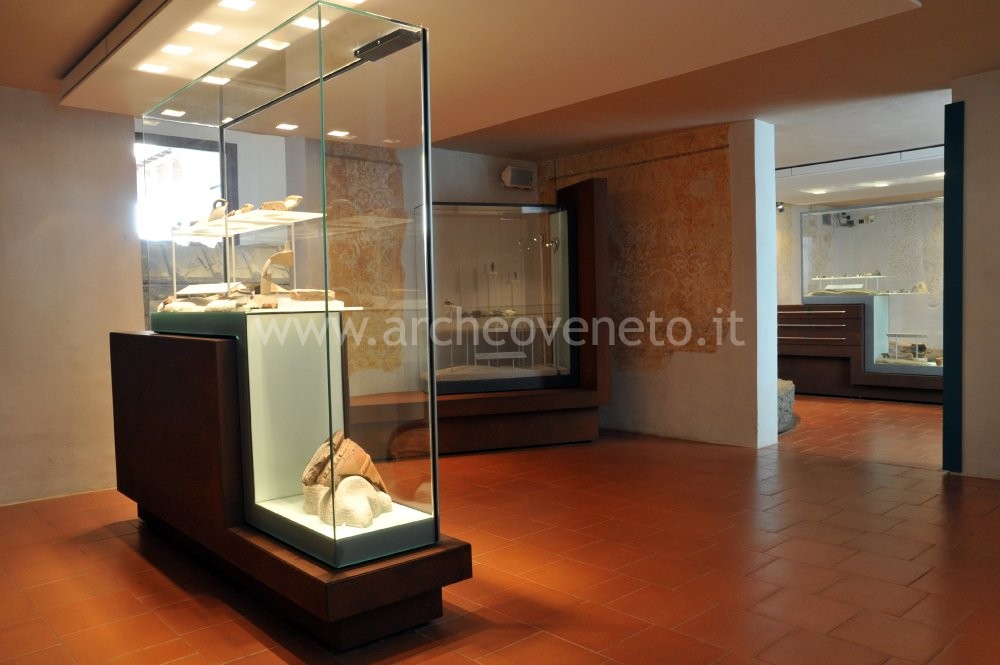 Room no. 10 is devoted to the village of Treviso, which reached its peak expansion between the 4th and 3rd century BC by gradually establishing relations and trade interests with the power of Rome. All the three display cases focus on this important historical period and exhibit several ceramic artefacts, examples of aes rude, a Venetic drachma in silver and interesting worship items (bronze statues depicting warrior and offerant, pottery with inscription, bronze sheet with female figures). Room no. 10 is devoted to the village of Treviso, which reached its peak expansion between the 4th and 3rd century BC by gradually establishing relations and trade interests with the power of Rome. All the three display cases focus on this important historical period and exhibit several ceramic artefacts, examples of aes rude, a Venetic drachma in silver and interesting worship items (bronze statues depicting warrior and offerant, pottery with inscription, bronze sheet with female figures).
|

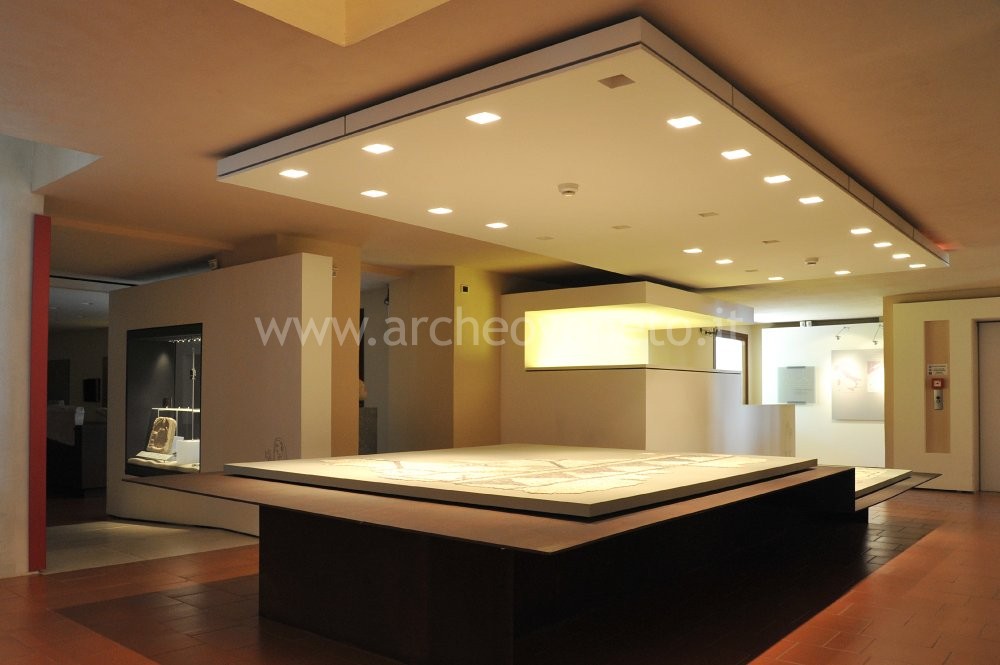 Room 11 marks the passage to the Roman Age. In the middle of the room there are two large fragments of polychromous mosaic discovered in Piazzetta della Torre. The floor is decorated with a set of octagonal elements (flowers with four petals, fuses and mill paddles on the background) and squared elements (small flowers and rhombic elements on the background) surrounded by a saw-toothed band. A panel on the right wall relates Luigi Bailo’s life. Room 11 marks the passage to the Roman Age. In the middle of the room there are two large fragments of polychromous mosaic discovered in Piazzetta della Torre. The floor is decorated with a set of octagonal elements (flowers with four petals, fuses and mill paddles on the background) and squared elements (small flowers and rhombic elements on the background) surrounded by a saw-toothed band. A panel on the right wall relates Luigi Bailo’s life.
|

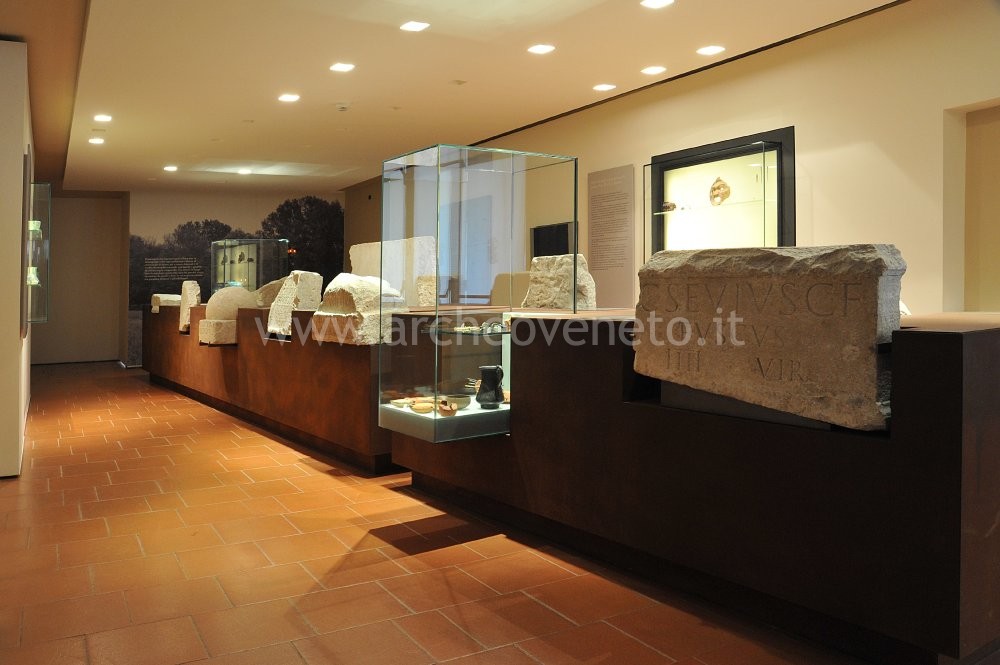 Room no. 12 too is devoted to Roman Age. Inside the room there are house furniture (including those found in the domus in Piazza San Pio X, dating back to early 1st century AD), tools for body care and cosmetics, superb glass vases (including a blue glass kantharos from Fanzolo di Vedelago), a small head of Venus in marble, work of the Aegean school (1st century AD), and several grave goods which show the most popular burial methods used in the area of Treviso. Noteworthy are some funerary epigraphs and Caius Sevius Fuscus’s inscription. Caius Sevius Fuscus was a quatturviri magistrate which means that by the first half of the 1st century AD the Municipium of Tarvisum had already been established. Room no. 12 too is devoted to Roman Age. Inside the room there are house furniture (including those found in the domus in Piazza San Pio X, dating back to early 1st century AD), tools for body care and cosmetics, superb glass vases (including a blue glass kantharos from Fanzolo di Vedelago), a small head of Venus in marble, work of the Aegean school (1st century AD), and several grave goods which show the most popular burial methods used in the area of Treviso. Noteworthy are some funerary epigraphs and Caius Sevius Fuscus’s inscription. Caius Sevius Fuscus was a quatturviri magistrate which means that by the first half of the 1st century AD the Municipium of Tarvisum had already been established.
|

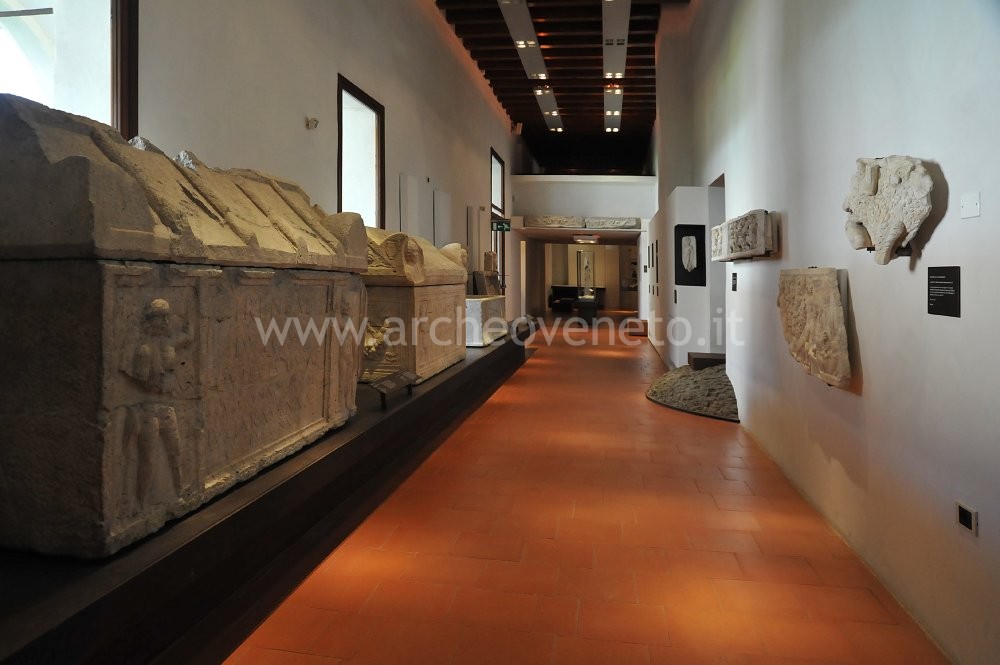 The lapidary exhibited in room no. 13, next to the cloister, houses most of Luigi Bailo’s collection. It includes a rich selection of portrait sculptures (athletes, deities, male and female heads and an herma with Heracles and Omphale) dating back to the second half of the 1st century BC and early 3rd century AD (barring a bust of Nero from Renaissance), as well as the stele in pseuaedicula shape of Titus Firminius Tarvisanus (1st-2nd century AD), two whole sarcophagi from Concordia Sagittaria (1st century AD) and Caerano San Marco (late 2nd century AD), as well as a group of Roman funerary artefacts related to urns and sarcophagi. In the same room there are also three Greek steles dating back to the 2nd century BC and other marble sculptures found in antiques markets dating back to different times. At the end of the room donations made by A. Fautario (bronze objects for everyday use, decorative objects for the house and various statues of deities), by A. Bocchi, T. d’Onigo (grave from Trevignano with bronze grave goods), by P. Donà (votive terracottas and lamps from Magna Graecia and Siceliots) and by T. Tessari (glasses, tools for body care, personal adornments, keys) are exhibited. Finally, there are findings from the necropolis of Covolo di Pederobba (second half of the 1st century BC-early 1st century AD) and a dichromatic mosaic from Oderzo, adorned with a grid in the centre combining eight-point stars, squared, rhombic, octagonal and circular elements (first half of the 2nd century AD). The lapidary exhibited in room no. 13, next to the cloister, houses most of Luigi Bailo’s collection. It includes a rich selection of portrait sculptures (athletes, deities, male and female heads and an herma with Heracles and Omphale) dating back to the second half of the 1st century BC and early 3rd century AD (barring a bust of Nero from Renaissance), as well as the stele in pseuaedicula shape of Titus Firminius Tarvisanus (1st-2nd century AD), two whole sarcophagi from Concordia Sagittaria (1st century AD) and Caerano San Marco (late 2nd century AD), as well as a group of Roman funerary artefacts related to urns and sarcophagi. In the same room there are also three Greek steles dating back to the 2nd century BC and other marble sculptures found in antiques markets dating back to different times. At the end of the room donations made by A. Fautario (bronze objects for everyday use, decorative objects for the house and various statues of deities), by A. Bocchi, T. d’Onigo (grave from Trevignano with bronze grave goods), by P. Donà (votive terracottas and lamps from Magna Graecia and Siceliots) and by T. Tessari (glasses, tools for body care, personal adornments, keys) are exhibited. Finally, there are findings from the necropolis of Covolo di Pederobba (second half of the 1st century BC-early 1st century AD) and a dichromatic mosaic from Oderzo, adorned with a grid in the centre combining eight-point stars, squared, rhombic, octagonal and circular elements (first half of the 2nd century AD).
|

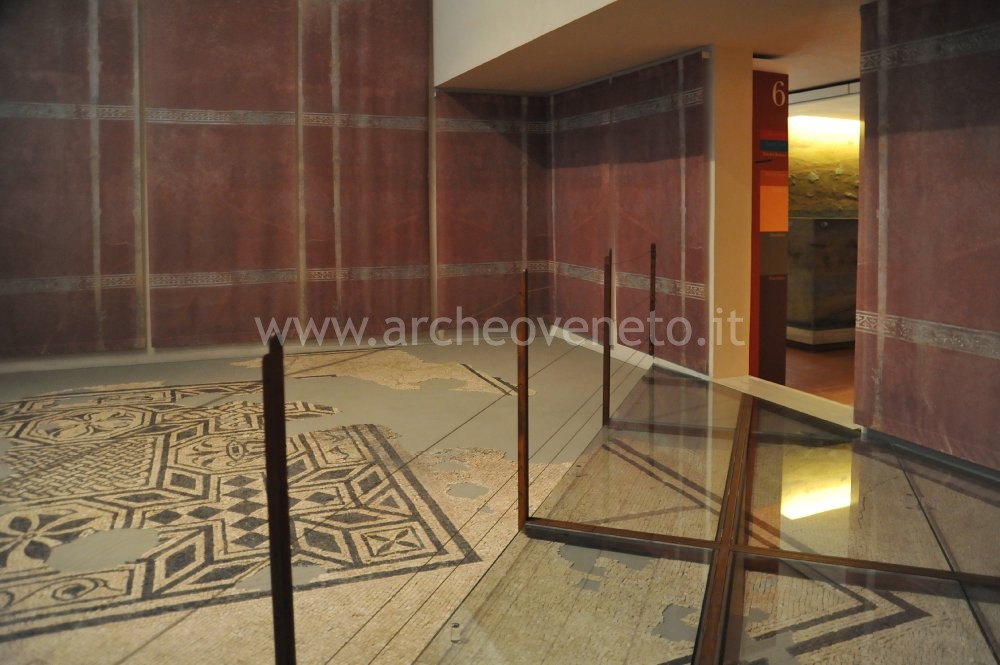 The last room of the museum hosts the large geometric dichromatic mosaic discovered in Corso del Popolo in Treviso (late 2nd century-early 3rd century AD) adorned with a grid combining octagons and crosses. The last room of the museum hosts the large geometric dichromatic mosaic discovered in Corso del Popolo in Treviso (late 2nd century-early 3rd century AD) adorned with a grid combining octagons and crosses.
|
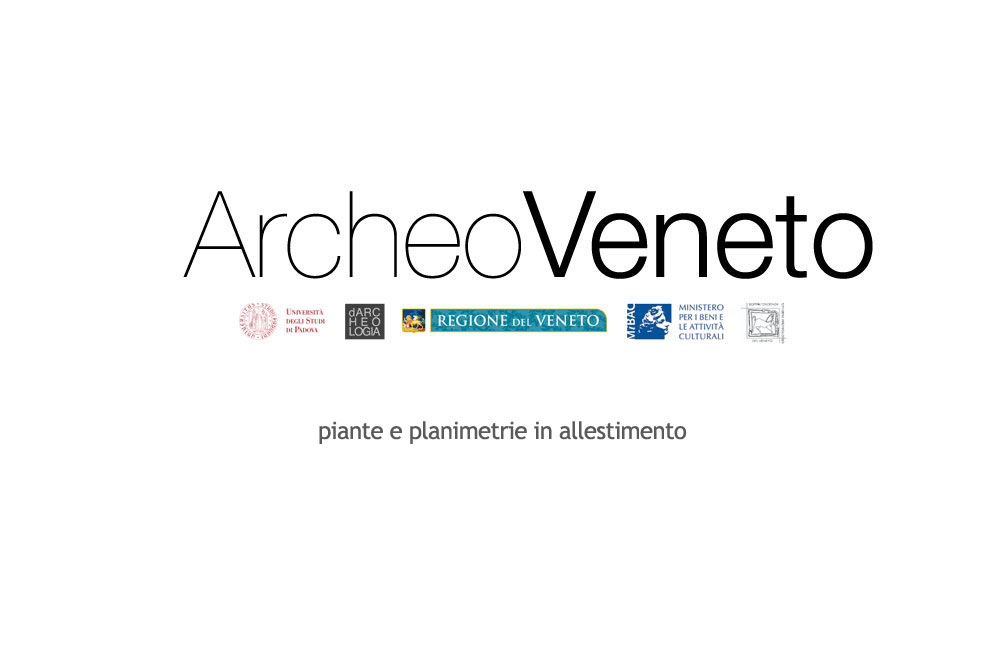
Admission: Negli orari di apertura
Ticket: Si
Price: Full fare 3€; reduced fare 2€ (teenagers aged between 5-18, groups of 10 or more people, seniors 70+, partners associations, university students); school groups 1 € (kindergartens, primary and middle schools, children aged between 6-15); free: children up to 6 years of age, disabled person and helper, history and art teachers, tour guides, school escorts (max 2 escorts per group), group leader (at least 10 people).
 School access School access
 Disabled access Disabled access
Opening Days
| Tipology |
When |
Specs |
| Summer/Winter |
Tuesday |
9.00-12.30; 14.30-18.00 |
| Summer/Winter |
Wednesday |
9.00-12.30; 14.30-18.00 |
| Summer/Winter |
Thursday |
9.00-12.30; 14.30-18.00 |
| Summer/Winter |
Friday |
9.00-12.30; 14.30-18.00 |
| Summer/Winter |
Saturday |
9.00-12.30; 14.30-18.00 |
| Summer/Winter |
Sunday |
9.00-12.30; 14.30-18.00 |
For groups of 15 or more persons the reservation is rccommended.
Recommended tour time (minutes): 60
 Toilet Toilet
 Parking Parking
Paid parking area in the near Piazza Matteotti.
 Bookshop Bookshop
 Rest points Rest points
 Bar/Resaturant Bar/Resaturant
There is a coffee machine in the cloakroom.
 Guide a stampa Guide a stampa
Audio guide
Brochure
Audioguides service momentarily suspended.
 Information boards Information boards
 Captions under exhibits Captions under exhibits
 PC learning points PC learning points
Videos
 Multilingual ads: Inglese Multilingual ads: Inglese
Brochure, audioguides (service momentarily suspended)
 Guided Tours Guided Tours
For guided tours, please contact the museum beforehand.
 Educational activities Educational activities
For information and booking: www.museicivicitreviso.it/index.php?it/110/attivit-educative-edidattiche.
It is also possible to contact the cultural association “Vivarte” (www.associazionevivarte.org; info@associazionevivarte.org; 329 3270597; 340 3436215).
 Educational workshops Educational workshops
 Library and documentation centre Library and documentation centre
For staff/authorised scholars use only.
 Other activities Other activities
| Guida del Museo Civico di Treviso 1959, a cura di Coletti L., Menegazzi L., Treviso. |
| Borda M. 1976, Ceramiche e terrecotte greche, magnogreche e italiche del Museo Civico di Treviso, Treviso. |
| Galliazzo V. 1979, Bronzi romani del Museo Civico di Treviso, Roma. |
| Zaccaria Ruggiu A. 1980, Le lucerne fittili del Museo Civico di Treviso, Roma. |
| Galliazzo V. 1982, Sculture greche e romane del Museo Civico di Treviso, Roma. |
| Polacco R. 1990, Sculture e tessellati paleocristiani e altomedievali del Museo Civico di Treviso, Roma. |
| Gerhardinger E. 1991, Reperti paleoveneti del Museo Civico di Treviso, Roma. |
| Musei e raccolte archeologiche del Veneto 2004, a cura di Di Mauro A., Dosson di Casier, pp. 77-79. |
| Musei Civici di Treviso. Le raccolte archeologiche a Santa Caterina 2007, Treviso. |
| Bonetto J. 2009, Veneto (Archeologia delle Regioni d’Italia), Roma, pp. 410-413. |
|



 School access
School access Disabled access
Disabled access Toilet
Toilet Parking
Parking Bookshop
Bookshop Rest points
Rest points Bar/Resaturant
Bar/Resaturant Guide a stampa
Guide a stampa Information boards
Information boards Captions under exhibits
Captions under exhibits PC learning points
PC learning points Multilingual ads: Inglese
Multilingual ads: Inglese Guided Tours
Guided Tours Educational activities
Educational activities Educational workshops
Educational workshops Library and documentation centre
Library and documentation centre Other activities
Other activities






































